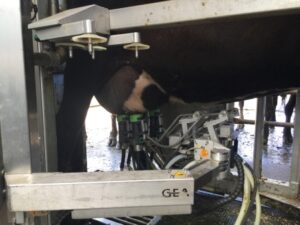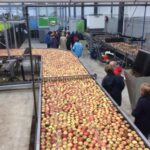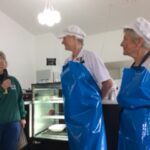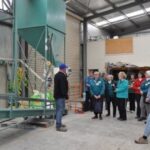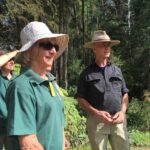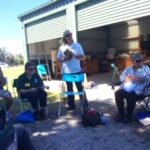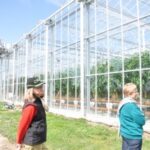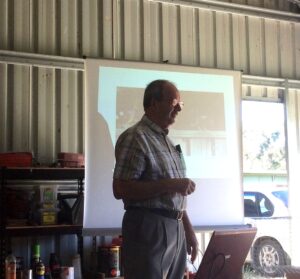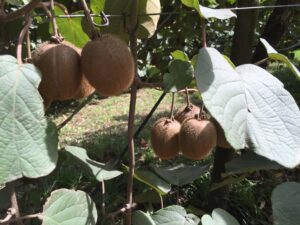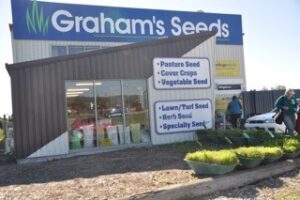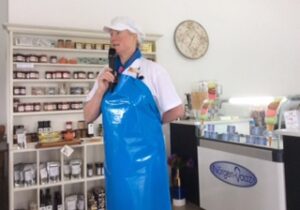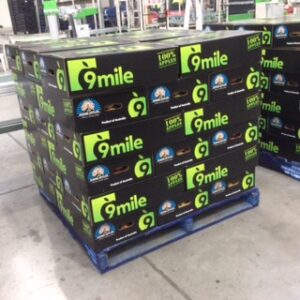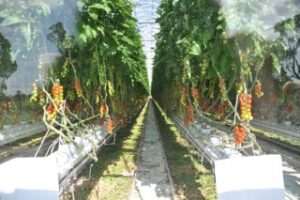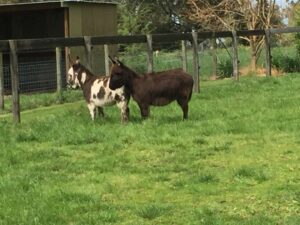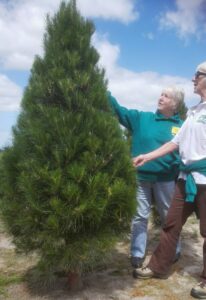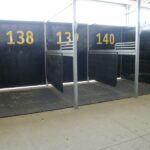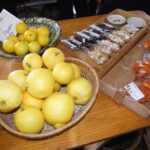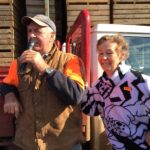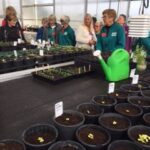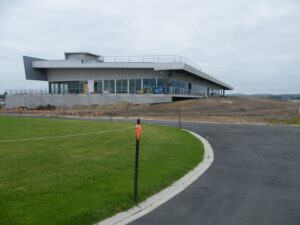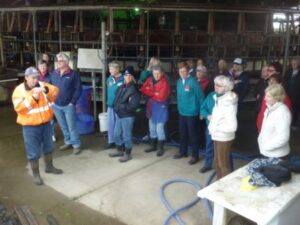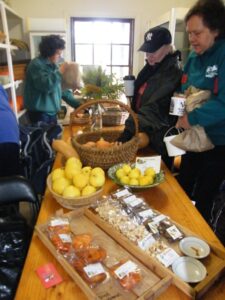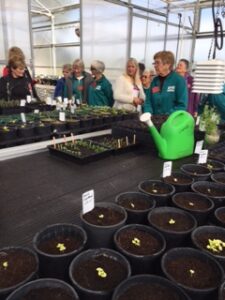
Sixteen years ago Women on Farms West Gippsland (WOFWG) members visited an historic farming property at Poowong. This month we did it again, noting the changes in farm use and family members at the helm.
Janet Staben and her daughter Hannah welcomed us again to ‘Dorfstedt’. As we sat on the hill top surrounded by farm structures of all materials and generations we listened to tales from the past and the present. For many WOF members it was a chance to reflect on their own farming and family journeys over the decades. The Stabens have adapted in their own journey to so many updates in transportation of goods, of consumer demand for dairy and piggery products, and to the career preferences of children as they mature into adulthood.
‘Dorfstedt’ is part of what became known in the Poowong hills as the Danish settlement. Family photographs, many from the late 1800s when the farm was first established, show the European origins. The old barn, huge and all encompassing is of a style which embodied many activities, essential shelter for animals in that hilly and often chilly landscape. The surrounding buildings create a village atmosphere, from the dairy and machinery sheds to the cottages and workman’s shed. One of the rooms, with a cosy fire is where Janet and friends enjoy spinning yarn and talking about the past.
Now that daughter, Hannah, has her own dairy and mixed breed herd in the paddocks, Janet has more time to reflect. A most significant observation which engaged us all was the significant decline in family run dairy farms as land take-overs and corporatization influence the agricultural scene.
Currently Hannah’s dairy herd of 160 mainly ‘red’ milkers is milked twice daily in a swing-over herringbone set up. Tankers collect the milk for Burra Foods in Korumburra. Two generations back the canned milk and cream were taken off farm by her grandfather and his cart horse!
This was a wonderfully interesting day. The excitement of the immediate road access being closed due to a landslip under repair added to a memorable (and for some) challenging visit to a member’s property.
Sixteen years ago Women on Farms West Gippsland (WOFWG) members visited an historic farming property at Poowong. This month we did it again, noting the changes in farm use and family members at the helm.
Janet Staben and her daughter Hannah welcomed us again to ‘Dorfstedt’. As we sat on the hill top surrounded by farm structures of all materials and generations we listened to tales from the past and the present. For many WOF members it was a chance to reflect on their own farming and family journeys over the decades. The Stabens have adapted in their own journey to so many updates in transportation of goods, of consumer demand for dairy and piggery products, and to the career preferences of children as they mature into adulthood.
‘Dorfstedt’ is part of what became known in the Poowong hills as the Danish settlement. Family photographs, many from the late 1800s when the farm was first established, show the European origins. The old barn, huge and all encompassing is of a style which embodied many activities, essential shelter for animals in that hilly and often chilly landscape. The surrounding buildings create a village atmosphere, from the dairy and machinery sheds to the cottages and workman’s shed. One of the rooms, with a cosy fire is where Janet and friends enjoy spinning yarn and talking about the past.
Now that daughter, Hannah, has her own dairy and mixed breed herd in the paddocks, Janet has more time to reflect. A most significant observation which engaged us all was the significant decline in family run dairy farms as land take-overs and corporatization influence the agricultural scene.
Currently Hannah’s dairy herd of 160 mainly ‘red’ milkers is milked twice daily in a swing-over herringbone set up. Tankers collect the milk for Burra Foods in Korumburra. Two generations back the canned milk and cream were taken off farm by her grandfather and his cart horse!
This was a wonderfully interesting day. The excitement of the immediate road access being closed due to a landslip under repair added to a memorable (and for some) challenging visit to a member’s property.
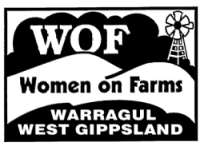

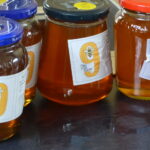



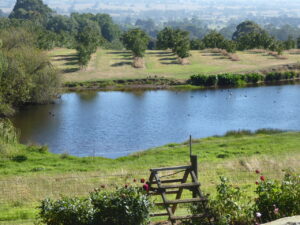
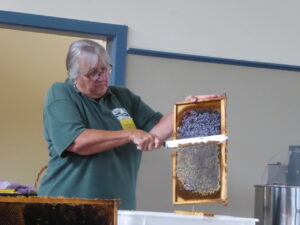

 View more photos of the visit
View more photos of the visit 

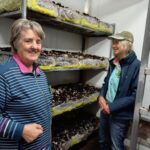
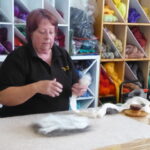

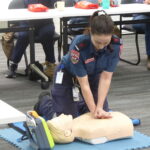
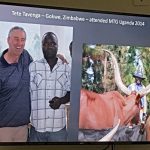
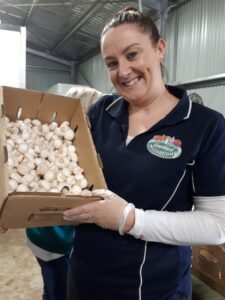
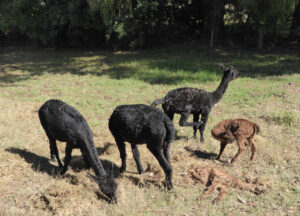
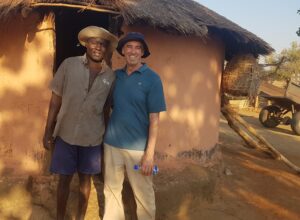
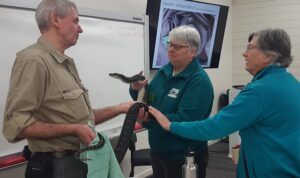
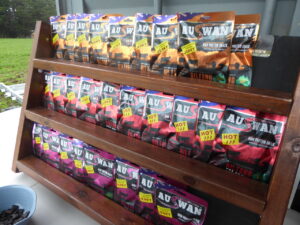
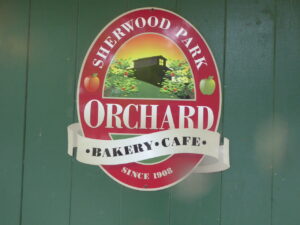
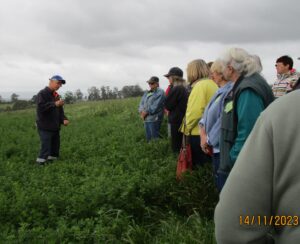
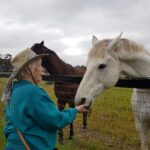

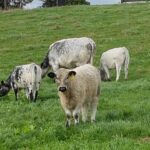
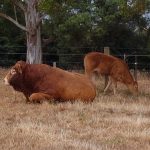
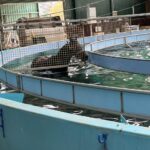
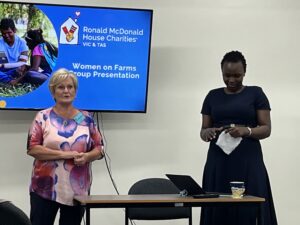
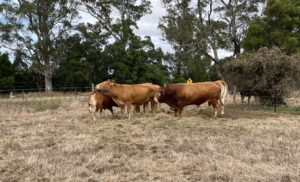
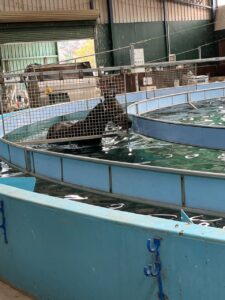
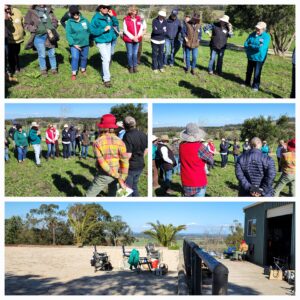
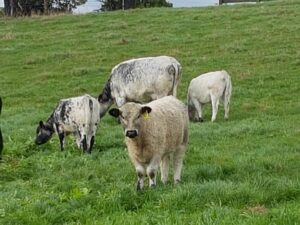
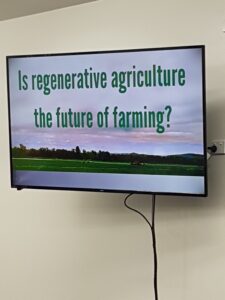
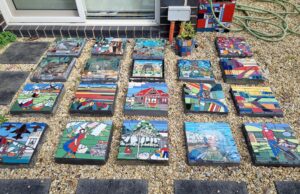
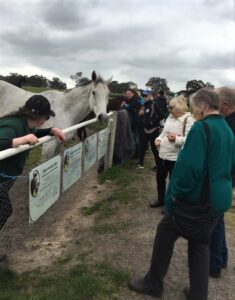
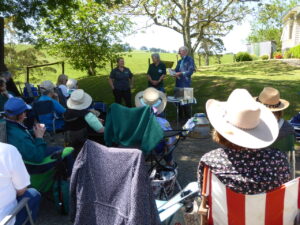
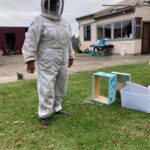
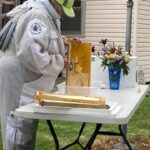
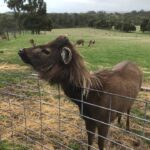
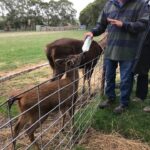
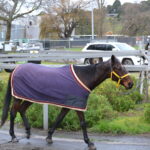
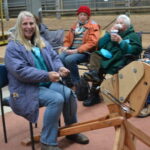
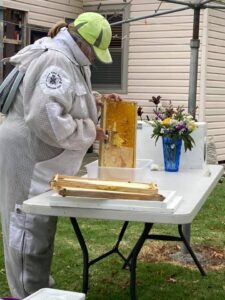
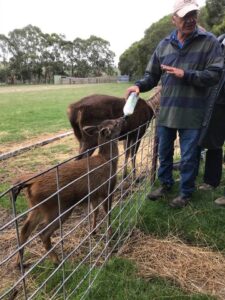
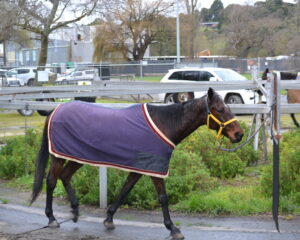
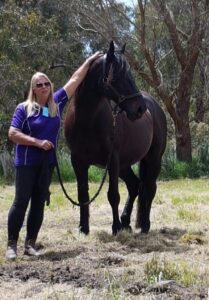 The members were finally able to gather outdoors after many periods of lockdown due to Victoria’s Covid 19 restrictions. Our meeting was held at the shelter at the Cannibal Creek reserve, and Lyn Link was able to update us on their progress after the Bunyip Fires of March 2019. After numerous repairs and reinstatement of fences, clearing of burnt trees, management of regrowth weeds, then re vegetating some of the areas they were making good progress with returning the property to its former state. However, the recent strong winds have proven to create yet another hurdle, as many of the dead trees have now fallen and come down across their newly reinstated fence lines. Pastures have returned, and they have cattle grazing the paddocks once again.
The members were finally able to gather outdoors after many periods of lockdown due to Victoria’s Covid 19 restrictions. Our meeting was held at the shelter at the Cannibal Creek reserve, and Lyn Link was able to update us on their progress after the Bunyip Fires of March 2019. After numerous repairs and reinstatement of fences, clearing of burnt trees, management of regrowth weeds, then re vegetating some of the areas they were making good progress with returning the property to its former state. However, the recent strong winds have proven to create yet another hurdle, as many of the dead trees have now fallen and come down across their newly reinstated fence lines. Pastures have returned, and they have cattle grazing the paddocks once again. 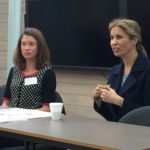
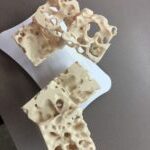
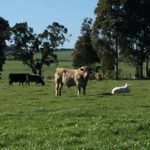
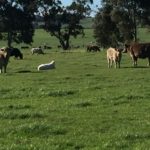
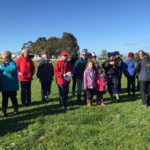
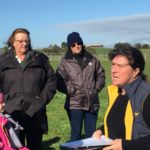
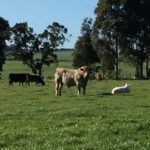
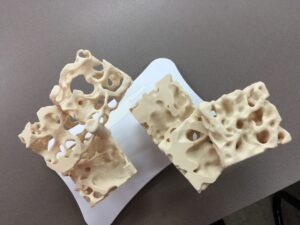 View more photos
View more photos 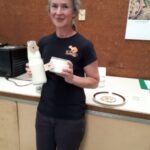
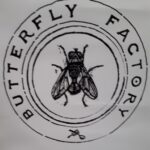
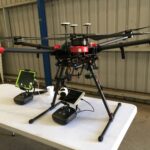
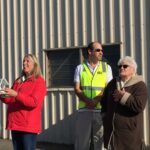

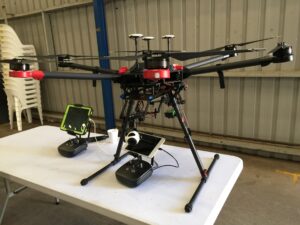

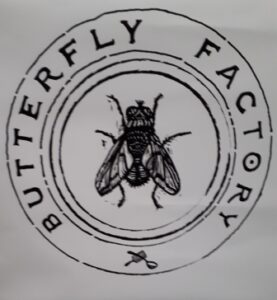
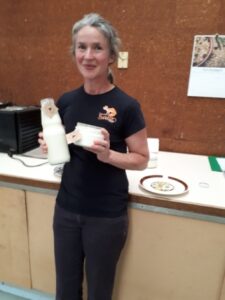 Rachel Needoba, a past member of Women on Farms, has started a small factory producing milk, yoghurt, cultured cream and butter. She sources the milk from a farm near Poowong.
Rachel Needoba, a past member of Women on Farms, has started a small factory producing milk, yoghurt, cultured cream and butter. She sources the milk from a farm near Poowong.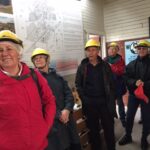
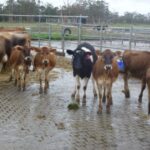
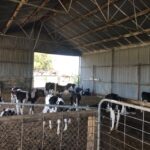
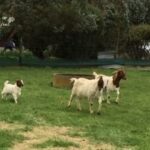
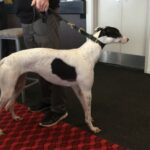
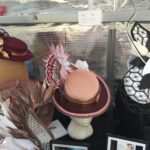
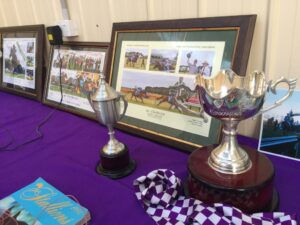
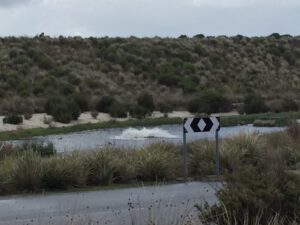
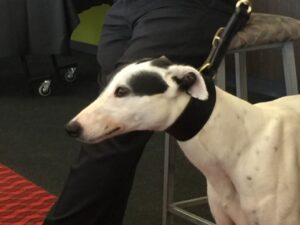
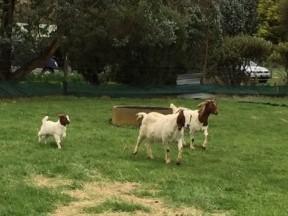 While we live in a traditionally cattle farming area, both dairy and beef herds, there has been an increased presence of goats. With their versatility as providers of meat, milk, fleece and companionship, goats are clearly popular animals. Goat meat is a valuable protein for a huge percentage of the world’s population. Still in the ‘niche’ category in Australia, goat flesh is gaining popularity.
While we live in a traditionally cattle farming area, both dairy and beef herds, there has been an increased presence of goats. With their versatility as providers of meat, milk, fleece and companionship, goats are clearly popular animals. Goat meat is a valuable protein for a huge percentage of the world’s population. Still in the ‘niche’ category in Australia, goat flesh is gaining popularity.